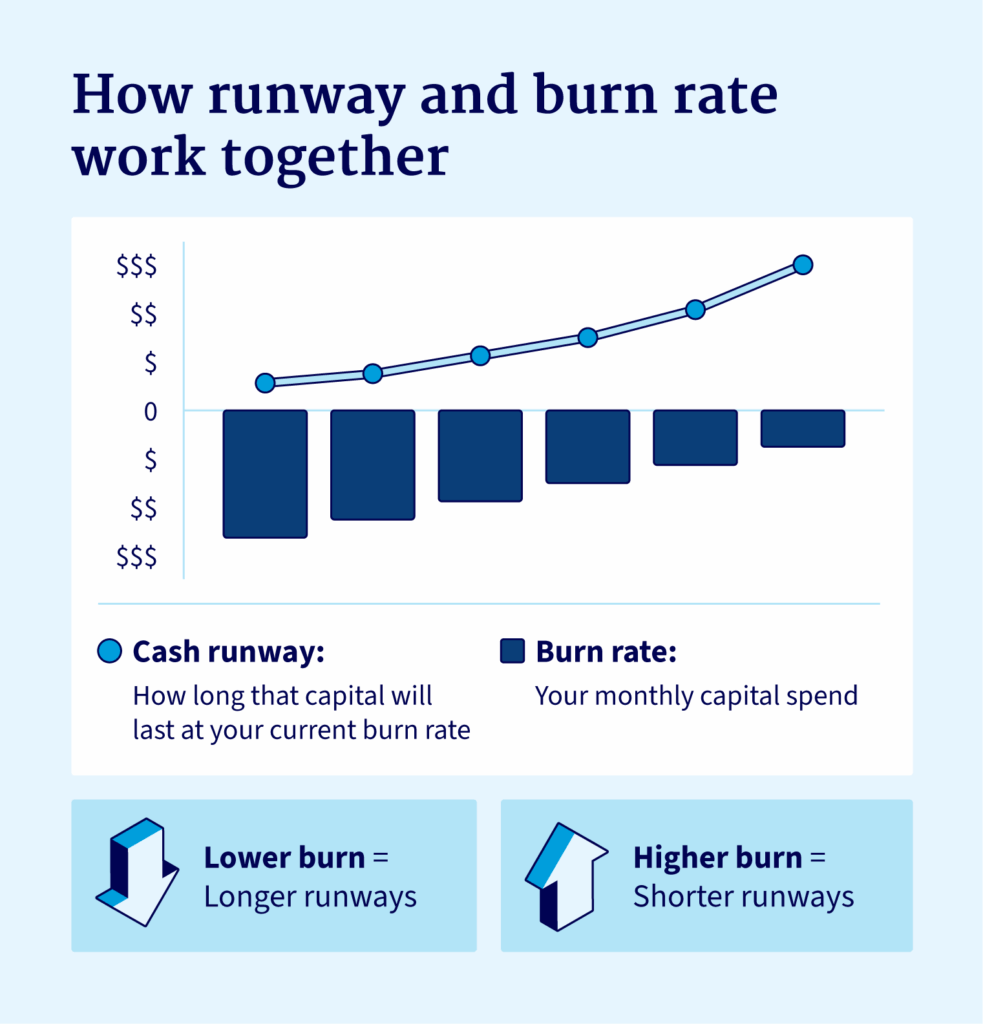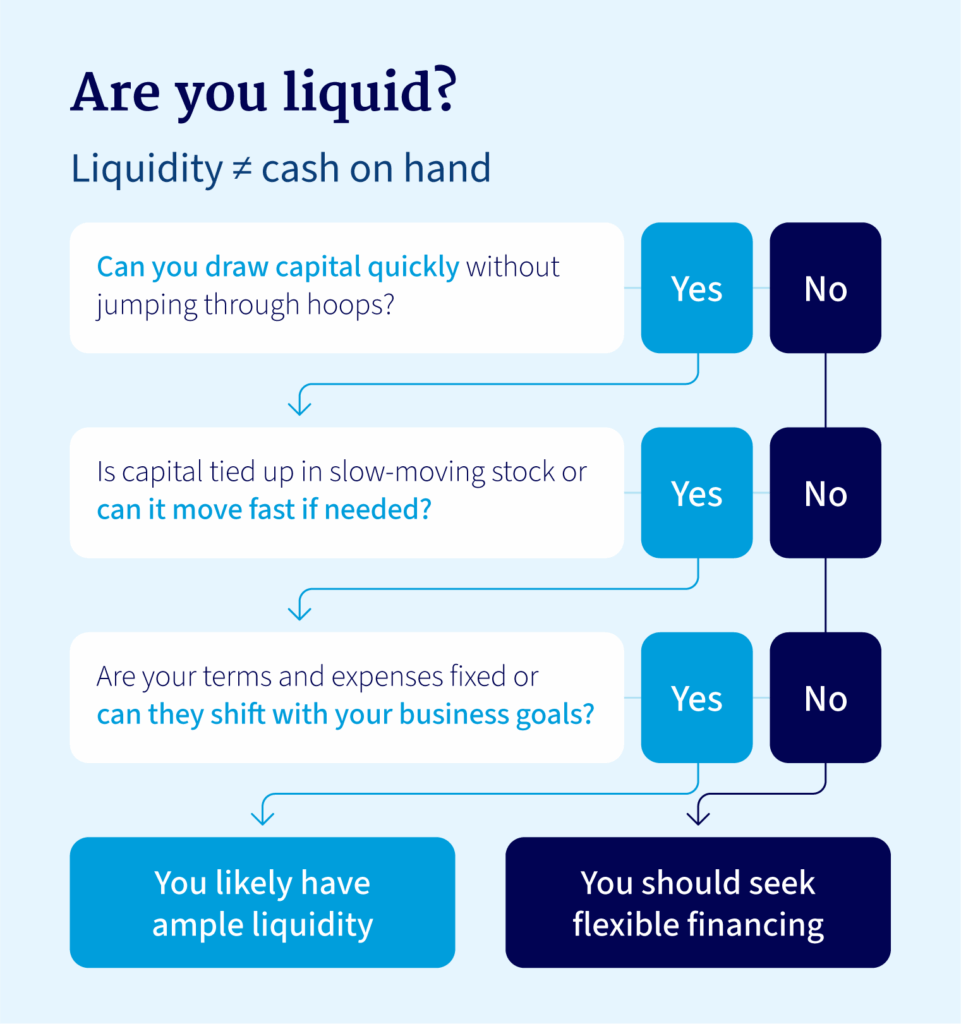Cash Runway: Understand your financial timing

A cash runway refers to how long your business can continue to operate using existing capital reserves. This is a strategic growth window that allows you to make decisions based on opportunities.
With a long runway, your company can pursue its long-term business vision from position of strength rather than short-term necessities, rather than hasty decisions that are not forced to constitute a jeopardized decision that jeopardizes your values or strategic direction. During this time, you and your leadership team can expand into new markets, buy competitors or invest in equipment to increase capacity, as you are not troubled by capital-based restrictions.
In this article, we will explain the relationship between your cash runway and burn rate. We will also show how to expand the cash runway while targeting growth, how to control the cash runway, and why the burn rate changes every month.
Cash Runway and Burning Rate: How They Coexist
Cash runway It is a measure of how long your company can operate with available capital. This calculation combines several key financial components:
- Current cash reserves (money in bank account)
- Accounts receivable (the money the customer owes you)
- Other current assets that can be quickly converted to cash, minus your monthly burn rate (how much cash you spend on operations, salaries, rents and other expenses per month)
Some businesses also consider predictable monthly revenue sources when calculating runways, although this should be done conservatively to illustrate potential volatility in revenue.
The shorter runway increases the risk of setbacks turning into crisis. The good news is that you can scale it by improving cash flow or implementing a liquidity management plan.
On the other hand, long runs means your business can effectively deal with their expected challenges, sometimes turning them into growth opportunities. However, an overly long runway can indicate that a company is too conservative about its capital allocation. Valuable growth investments may be missed, such as product development or market expansion, which may accelerate revenue and competitive positioning.
To give yourself more time, you need to understand how strategic decisions affect your burn rate and by expanding your sustainable growth schedule.
Burning rate It is a measure of speed: how fast it is reflected every month through the speed of net negative cash flows.
Naturally, the cash runway and the burn rate go hand in hand; his burn rate is higher, the shorter the runway. The lower the combustion speed, the longer the runway will take.

How to calculate cash runway and burn rate
You can apply two simple formulas to clearly understand the financial situation of a company. First, here is how to calculate the cash runway:
| Cash runway formula = cash balance ÷ cash burn rate |
|---|
Your “cash balance” is the capital you now own, as well as any cash equivalent (the asset you can quickly convert into cash). Divide this by your monthly burn rate and the result is your cash runway measured in a few months.
For example, a Texas manufacturer may have $1.2 million in a bank. If it spends 1 million months on the payroll, its runway is 12 months.
During this time, they can automate production to increase output and increase efficiency or obtain larger distribution contracts before they can obtain positive cash flow or need to raise new capital. Over a 12-month period, they have time to properly research automation options, install equipment and build distributor relationships – a strategic move takes months to execute and is impossible on short tracks alone.
The second formula you need to know how to calculate is the cash burn rate:
| Cash Burning Rate Formula = Cash Received – Cash Payed |
|---|
The combustion rate usually changes during the set period (usually one month). High burn rates show that your operating expenses are a big part of your spending, and if that’s all about growth, it’s not essentially bad.
For example, a wholesale distributor stocks before a very busy season, or a new staff member is on the construction company for a major contract, which is to boost future revenue.
Instead, your burn rate drop isn’t always good news – it could mean stagnant growth or cuts.
Monitoring these two metrics provides leaders with key insights on when it is appropriate to invest, slow down or bring in extra capital.
How to speed up your runway without slowing down growth
To expand the runway without slowing growth, you can manage your cash flow tightly while also seeking out external funds. This gives you the financial flexibility to seek growth opportunities without worrying about paying basic operating costs.
Here are three advantages, this method provides:
Ensure capital before needing
Until you need capital to limit your choices, you can force you to compromise in ways that would otherwise not have been possible. When your financial situation is strong, it is important to ensure access to capital, not when it is necessary to make up for the shortfall.
With private credit lenders such as National Business Capital, you can apply for flexible funding options, such as commercial lines of credit. We can provide you with financial space to say “yes”, invest in new contracts, or expand operations without waiting for the cash process to catch up.
Finding insights behind numbers
Many businesses miss out on the easy way to free up cash by addressing inefficiency.
Your money may be bundled in stock that is not sold, equipment or work you are not using has been completed but has not been charged yet. Discovering these issues may give you more cash in your business.
For example, a construction company may require suppliers to provide longer payment terms. They may get 60 days instead of paying for the materials within 30 days, which gives them more room to breathe in cash.
In this case, investment inventory management software can also help by improving material flow, reducing holding costs and accelerating cash conversion cycles.
Expert tips: Invoice financing can help free up funds when customers delay payments. A factoring company provides advance payments to your accounts receivable, helping you bridge the cash flow gap and convert future revenue into instant cash flow.
Take advantage of smart timing
The burn rate is constantly changing, which creates an opportunity window when you apply for funds from an advantage if you actually need it.
For example, a construction company spends the most during the heavy construction phase of crew and materials, while wholesalers connect cash-filling warehouses before busy seasons. The key is to secure capital access during slower periods, so when these high-end phases arrive, you are ready.
Flexible private credit adapts to the speed of your business, allowing you to take advantage of opportunities when you lie on your back with temporary cash. Many companies secure bridge loans ahead of time to cover predictable fees, such as large material orders, without waiting for customer payments to clear.
Control the cash runway
Runway posture refers to the financial breathing space your business must make decisions. When you operate from a position of competency and capital well-capitalized strength, your runway posture is healthier and you have greater liquidity to invest in growth.


Understanding your track posture’s rating for your business usually boils down to following the rules of thumb of 30/90/180:
- 30-day runway: With the remaining month of operating capital, you can minimize the buffer of peak revenue or expenditure drops, so you need to focus on optimizing cash flow or ensuring new capital quickly.
- 90-day runway: You have more room to manipulate and absorb smaller challenges, but there are commercial advantages to check your spending and increase revenue generation to expand the runway.
- 180-day runway: The six-month financial runway is very long. It may indicate that over-management will not cause capital to work hard to grow.
If you consistently monitor and adjust your capital levels, a strong runway posture shows your preparation for new opportunities or market turmoil.
Why does burn rates change every month (and how to stabilize)
You will notice that your burn rates vary; this is by no means a flat, predictable line. Burn rates rise and decrease due to factors such as seasonality, inventory loading, growth investment decisions and late customer payments.
The combustion rate fluctuations in these industries are standard:
- manufacturing: The second quarter usually accelerates the combustion rate to build inventory 4 Q4 sales, creating a period of cash compression (when capital is intentionally kidnapped in non-liquid assets).
- put up: Contractors may see seasonality of major projects, slowing down and escalating due to weather. This variability requires that the strategic plan match capital and funds to project-related expense cycles, such as mobilization costs.
- Wholesale and distribution: Businesses in this industry often preload before major holidays. This is liquidity pull, and companies seek capital earlier so that they can prepare for a period of high demand.
Understanding what your burn rate is and why it will help you have better control over your capital and time when seeking business financing.
Find national commercial capital to help expand the runway
Many founders and CFOs have learned this universal truth in a difficult way: Growth is almost always expensive and takes longer than you plan.
Mastering the burn rate can control you and allow you to drive business growth without bank balances and capital levels dictating your strategy. This is the key to extending the runway, retaining capital and obtaining funds before choosing restrictions.
At National Business Capital, our consultants go beyond the numbers to find the right financing for your unique business needs. Apply now to see how we can help you find solutions that expand your runway and add to your next growth phase.
Frequently Asked Questions
Your cash runway is how long your business can operate in terms of its current capital and cash equivalents. Your burn rate is the rate you spend every month. Higher burn rates mean shorter runways and vice versa.
The cash runway varies between the industry, growth phase and strategic goals for each business. A healthy cash runway gives leaders time to invest in business growth without having to focus on short-term financial needs.
Calculate the cash runway by dividing the current cash balance (available capital plus cash equivalent) by your monthly cash burn rate.
Manage combustion rates during seasonal shifts, are expected to be more costly during busy periods and receive flexible funding in advance.






